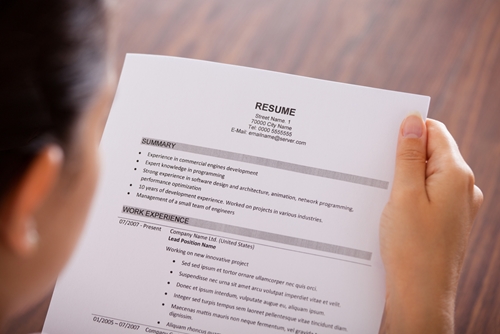If you’re going to pursue a professional career in dance, then you’re going to need an impressive dance resume. This document is a tool that will help you land auditions, impress directors and get discovered, so you need to make sure it’s as perfect as can be.
Basic Information
As with a normal CV, your dance resume needs a header that outlines your personal information. This includes your full name, phone number, email and address. Dance Spirit magazine also recommended that you include your date of birth, height and weight in your header.
Training
Writing up your header is the easy part! Next, you’ll need to outline any and all dance training that you’ve received. In this section, you’ll want to list any schools, colleges, intensives, camps or conservatories that you’ve attended. Include the years you were there, the classes you took and what skill level you attained. When you’re listing training, start with the most recent experience and work in reverse chronological order.
If you have a lot of different training, feel free to leave out unrelated experiences. So if you’re auditioning for a professional ballet company, it’s more important to list a ballet-focused summer intensive than the musical theater camp you attended in high school.
Experience and Performances
Next up on your dance resume should be any professional experience and performances. Include any companies or groups you were part of, as well as any commercials, music videos or shows you were in. Dance Spirit suggested that you include the name of the choreographer and the role you played in shows. However, make sure to format show titles correctly.
If you’re just starting out as a professional dancer, this area might be a bit sparse. While no one likes to have an empty resume, you don’t need to list your recital performances just to take up space. List relevant experience only – if you’re low on items, you can include more details or simply fill out your resume in other sections.
This is also a good place to list any teaching or choreographing experience you may have. If you’ve been a teacher’s assistant or led a preschool class, feel free to include it! However, if your experience is extensive – more than one or two items – you may want to create a separate section for it.
Accolades
It’s one thing to dance, but it’s another to have received acclaim for your performances. You’ll stand out from other candidates if you include an accolades or awards section on your professional resume. There’s no need to list every competition you’ve ever competed in, but highlight your most impressive accomplishments. So first place for your solo at a regional competition is a good item to include, while first place at your school talent show can be left out.
Special Skills
Another way that you can make yourself more appealing to those reviewing your resume is to list your special skills. What can this include? Here are a few skills worth noting:
- Fluency in a second language
- Tumbling skills
- Improvisation
- Partnering
- Other related sports, such as figure skating or yoga.
Remember to keep these points relevant to the position you’re applying for – don’t jot down anything that pops into your head just to take up space.
General Resume Tips
Once you’ve written up your resume, take a few more minutes to ensure it’s eye-catching with these tips:
- Be consistent when formatting the size, font and spacing.
- Keep your resume to one page if possible.
- Don’t forget to attach a professional headshot.
- Leave off references unless specifically requested.
- Double- and triple-check your spelling and grammar.




